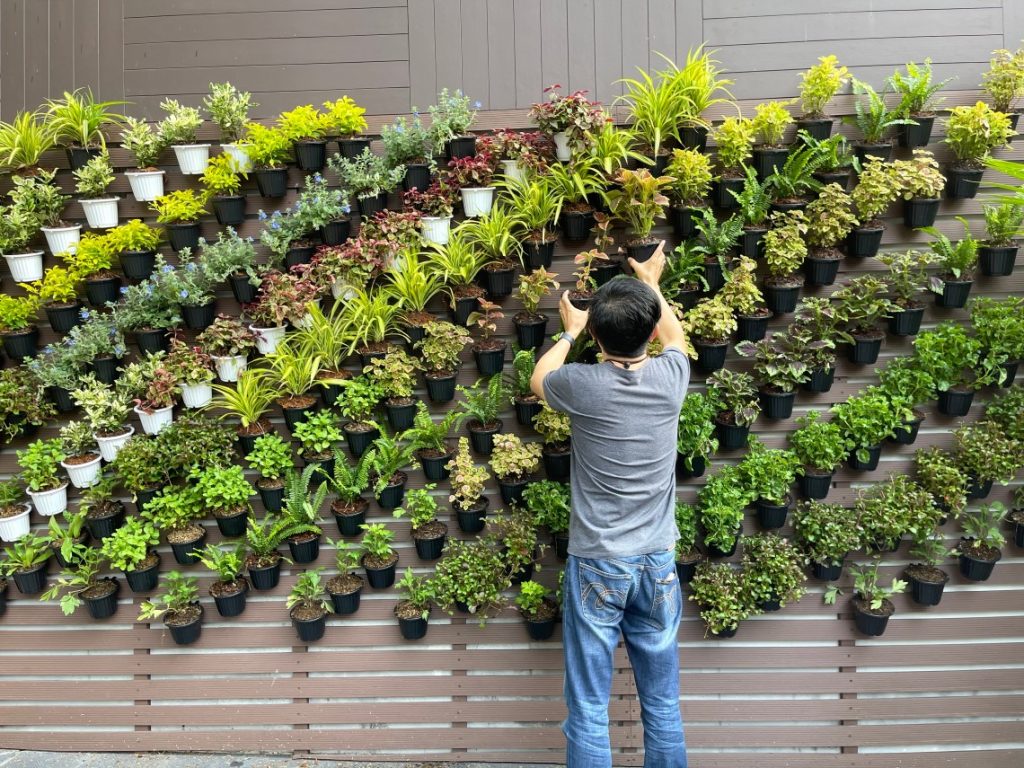Vertical Gardening: Innovative Solutions for Urban Spaces explores the growing trend of vertical gardening and its potential to transform urban environments. As cities become more crowded and green spaces become scarce, creative solutions are needed to bring nature back into our urban lives. This article highlights the benefits of vertical gardening, from maximizing limited space to improving air quality and reducing energy consumption. With practical tips and inspiring examples, this piece aims to inspire readers to embrace vertical gardening as a sustainable and beautiful way to bring greenery into their urban landscapes.
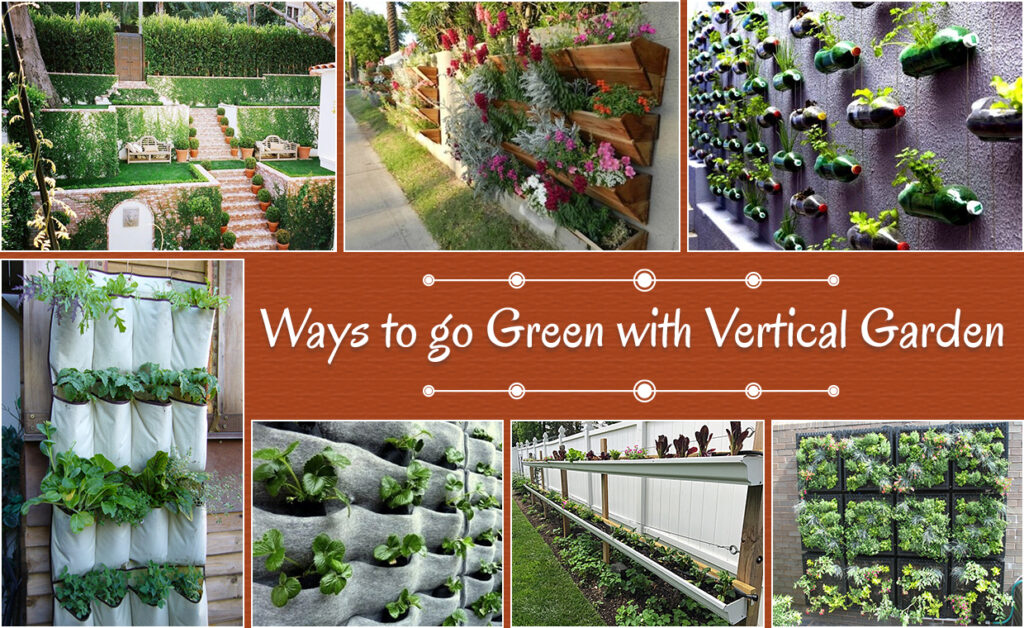
This image is property of cloudfrontgharpediabucket.gharpedia.com.
Benefits of Vertical Gardening
Vertical gardening is a popular technique that offers a multitude of benefits for urban dwellers. Whether you have limited space, want to improve air quality, reduce energy consumption, or enhance aesthetics, vertical gardens can fulfill all these desires and more. Let’s explore these benefits in more detail.
Maximizing limited space
One of the most significant advantages of vertical gardening is its ability to maximize limited space. In densely populated urban areas, finding enough space for traditional gardens can be a challenge. However, vertical gardens offer a solution by utilizing vertical surfaces such as walls, fences, balconies, and rooftops. By growing plants vertically, you can make the most of even the smallest areas, creating a beautiful green oasis in the midst of the concrete jungle.
Improved air quality
Vertical gardens also contribute to improved air quality in urban environments. Plants naturally filter pollutants from the air, helping to remove harmful substances and toxins. By incorporating vertical gardens into urban spaces, we can significantly reduce air pollution, creating a healthier and more pleasant living environment. Breathing in fresh air enriched with oxygen can have a positive impact on your overall well-being and quality of life.
Reduced energy consumption
Another advantage of vertical gardening is its potential to reduce energy consumption. The plants in vertical gardens act as natural insulation, reducing the amount of direct sunlight that hits walls and structures. As a result, the need for air conditioning or temperature control systems can be significantly reduced. By using vertical gardens strategically, you can create a more energy-efficient space while enjoying the benefits of lush greenery.
Enhanced aesthetics
Vertical gardens are not only functional but also aesthetically pleasing. They can transform plain and dull walls, fences, or balconies into vibrant and captivating spaces. With a variety of plants and flowers cascading down the vertical surfaces, you can add color, texture, and life to your surroundings. Whether you choose vibrant blooms or lush green foliage, vertical gardens offer endless opportunities to express your creativity and create a visually stunning environment.
Types of Vertical Gardens
Vertical gardens can be implemented in various ways depending on the available space and personal preferences. Let’s explore some of the most common types of vertical gardens.
Vertical gardens on walls
Vertical gardens on walls are the most traditional and widely recognized type of vertical gardening. By attaching specially designed structures or planters to walls, you can create a stunning vertical garden that covers an entire surface. This type of vertical gardening is ideal for those who have limited ground space or simply want to add a touch of greenery to their walls, both indoors and outdoors.
Vertical gardens on fences
If you have a fence surrounding your property or have access to a shared fence in a communal space, vertical gardens on fences can be a fantastic option. By utilizing the vertical surface of the fence, you can create a living wall of plants that adds privacy, beauty, and natural appeal to your outdoor space. Vertical garden systems designed explicitly for fences allow you to grow a wide variety of plants, regardless of the available ground space.
Vertical gardens on balconies
For apartment dwellers or those with limited outdoor space, vertical gardens on balconies offer an excellent solution. Balcony railings and walls can be transformed into vibrant vertical gardens, bringing nature closer to urban living. Hanging planters, stacked containers, or specially designed balcony garden systems allow you to grow a range of plants, herbs, and flowers, creating a peaceful sanctuary amidst the hustle and bustle of the city.
Vertical gardens on rooftops
Rooftop gardens have gained popularity in recent years, and vertical gardening is an integral part of this trend. By utilizing the vertical surfaces on rooftops, you can create green spaces that are visually striking and environmentally beneficial. Rooftop vertical gardens not only enhance the aesthetics of buildings but also provide insulation, improve air quality, and contribute to sustainable urban development.
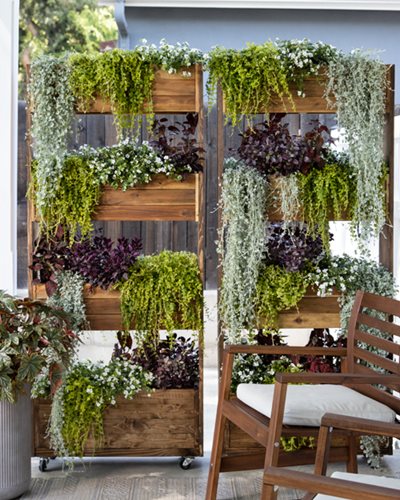
This image is property of www.gardendesign.com.
Choosing the Right Plants for Vertical Gardens
Choosing the right plants for your vertical garden is crucial to the success and longevity of your green oasis. Several factors should be considered when selecting plants for vertical gardens.
Consideration of light requirements
Different plants have varying light requirements, so it’s essential to consider the available light in your vertical garden space. If you have a shady wall or a balcony that receives limited direct sunlight, choose shade-tolerant plants such as ferns, ivy, or peace lilies. On the other hand, if your garden space is bathed in sunlight, opt for sun-loving plants like succulents, herbs, or flowering vines.
Selection of plants with shallow roots
Since vertical gardens often rely on containers or pockets in structures for planting, it’s important to choose plants with shallow roots. Deep-rooted plants may not thrive in limited soil space, and their roots can damage the underlying structure. Opt for plants that have compact root systems or those that are well-suited to container gardening, such as lettuce, radishes, or shallow-rooted herbs.
Choosing plants suitable for vertical growth
Vertical gardens are all about upward growth, so selecting plants that naturally climb or trail will create a stunning visual effect. Vining plants like tomatoes, peas, or climbing roses are perfect for trellises or vertical structures. They will happily wrap their tendrils around the support system and create a lush and verdant display. Additionally, trailing plants like pothos or ivy can gracefully drape down from elevated containers, adding a touch of elegance to your vertical garden.
Plants that thrive in urban environments
When choosing plants for vertical gardens in urban environments, it’s important to consider their ability to withstand the challenges of city living. Pollution, limited space, and temperature fluctuations are all factors that can affect plant health. Look for plants that are known to thrive in urban environments, such as air-purifying varieties like snake plants, peace lilies, or spider plants. These hardy plants can handle the stresses of urban life while adding beauty and vitality to your vertical garden.
Designing and Building a Vertical Garden
Designing and building a vertical garden requires careful planning and consideration of various factors. Let’s explore the key steps involved in creating a successful vertical garden.
Assessing available space
The first step in designing a vertical garden is to assess the available space. Consider the dimensions, orientation, and structural options for your vertical garden. Evaluate the sunlight exposure, wind patterns, and any potential obstacles that may affect the growth of your plants. By understanding the limitations and possibilities of your space, you can make informed decisions during the design and implementation process.
Determining structural support systems
After assessing the available space, it’s crucial to determine the appropriate structural support systems for your vertical garden. Different types of vertical gardens require different support structures. For vertical gardens on walls, you may need to install vertical planters, trellises, or wires to provide stability and support for your plants. Vertical gardens on fences may require additional brackets or hooks to attach planters securely. Balcony and rooftop gardens may require specialized railing systems or hanging mechanisms. Choose support systems that are sturdy, durable, and designed specifically for vertical gardening.
Irrigation and drainage considerations
Proper irrigation and drainage are essential for the health and longevity of your vertical garden. Different plants have different water requirements, so it’s essential to choose an irrigation system that can cater to the specific needs of your plants. Drip irrigation systems, wall-mounted sprinklers, or self-watering containers are popular choices for vertical gardens as they provide adequate moisture to the plants without causing waterlogging or excess runoff. Ensure that your vertical garden has proper drainage systems to prevent water accumulation and potential damage to the supporting structure.
Selecting suitable containers
Choosing the right containers is crucial for the success of your vertical garden. Consider the size, material, and stability of containers based on the plants you intend to grow. Lightweight, UV-resistant plastic containers are a popular choice as they are easy to move, withstand different weather conditions, and don’t add unnecessary weight to the supporting structure. Vertical garden kits or modular planters specifically designed for vertical gardening can provide a convenient and efficient solution. Alternatively, repurposed items like shoe organizers or hanging baskets can also be used creatively for container gardening.
Choosing the right soil composition
Selecting the right soil composition is essential for the health and growth of your plants. For vertical gardens, lightweight and well-draining soils are preferred to avoid excessive weight and water retention. A good mixture of organic matter, peat moss, and perlite or vermiculite can provide the ideal balance of nutrients and drainage. Consider adding slow-release fertilizers or organic amendments to ensure a steady supply of nutrients for your plants. By choosing the right soil composition, you can create an optimal growing environment for your vertical garden.
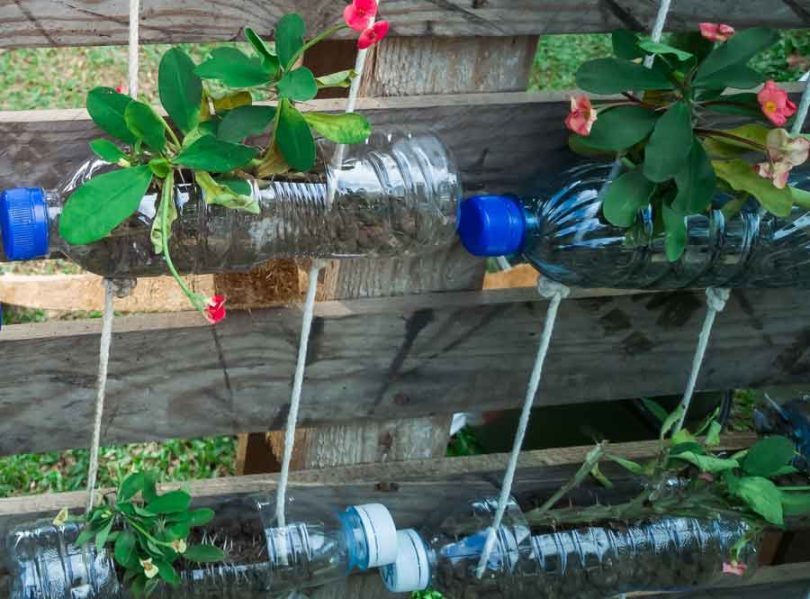
This image is property of www.trianglegardener.com.
Vertical Gardening Techniques
Vertical gardening offers a wide range of techniques that cater to different preferences and requirements. Let’s explore some of the most popular techniques used in vertical gardening.
Container gardening
Container gardening is perhaps the most common technique used in vertical gardening. It involves growing plants in containers or pots that are placed vertically or elevated from the ground. This technique allows for flexibility in terms of plant selection, placement, and maintenance. Container gardening is ideal for those with limited space, as it can be implemented on walls, fences, balconies, or rooftops.
Hydroponics
Hydroponics is a soil-less gardening technique that relies on a nutrient-rich water solution to provide plants with the necessary elements for growth. In vertical hydroponic systems, plants are typically suspended in flowing water or supported by specialized structures, allowing their roots to be continuously exposed to the nutrient solution. This technique offers efficient water use, faster growth rates, and maximizes space utilization.
Aeroponics
Aeroponics takes hydroponics to the next level by suspending plant roots in a misted air environment. In vertical aeroponic systems, plants receive nutrients through a fine mist or fog, which allows for optimal oxygenation and nutrient absorption. This technique promotes rapid plant growth, reduced water consumption, and eliminates the need for traditional soil-based gardening.
Living walls
Living walls, also known as green walls or vertical gardens, are a visually striking form of vertical gardening that involves growing plants directly on vertical surfaces. Living walls can be created using various methods, including vertical planters, modular systems, or customized structures. This technique is highly adaptable and can be implemented both indoors and outdoors. Living walls provide insulation, enhance air quality, and create a stunning visual impact.
Green facades
Green facades are similar to living walls but focus on covering the exterior surfaces of buildings with vegetation. By using climbing plants or vines, green facades can transform the appearance of a building, improve insulation, and contribute to energy efficiency. Green facades are especially suitable for urban areas where vertical space is limited, as they allow for the integration of nature into the existing architecture.
Maintenance and Care of Vertical Gardens
Proper maintenance and care are essential for ensuring the health and longevity of your vertical garden. Let’s explore some important aspects of maintenance and care.
Watering techniques
Watering is a crucial aspect of vertical garden maintenance. Depending on the type of plants, the climate, and the irrigation system, you may need to adjust the watering frequency and duration accordingly. Avoid excessive watering, which can lead to waterlogging or root rot, and ensure that the water reaches all the plants evenly. Consider using moisture meters or self-watering systems to maintain optimal moisture levels and prevent over or under-watering.
Pruning and trimming
Regular pruning and trimming are necessary to keep your vertical garden looking tidy and healthy. Trim off any dead or damaged foliage to redirect the resources to healthy growth. Prune back overgrown plants or vines to prevent them from becoming too heavy or encroaching on nearby plants. Pay attention to any signs of pests or diseases and take appropriate measures to control and prevent their spread.
Fertilization methods
To ensure proper nutrient intake, fertilizer application is essential for vertical gardens. Depending on the type of plants and the soil composition, you may need to fertilize your vertical garden regularly. Organic fertilizers, slow-release pellets, or liquid plant nutrients can provide the necessary elements for healthy growth. Follow the instructions provided by the fertilizer manufacturer and avoid over-fertilizing, which can cause nutrient burn or damage to the plants.
Pest and disease management
Like traditional gardens, vertical gardens are susceptible to pests and diseases. Regularly inspect your plants for signs of pests such as aphids, mealybugs, or spider mites. Introduce natural predators or use organic pest control methods to control infestations. Keep an eye out for diseases such as powdery mildew or root rot and take appropriate measures to prevent their spread. Maintaining good hygiene, proper ventilation, and providing optimal growing conditions can help prevent many pests and diseases.
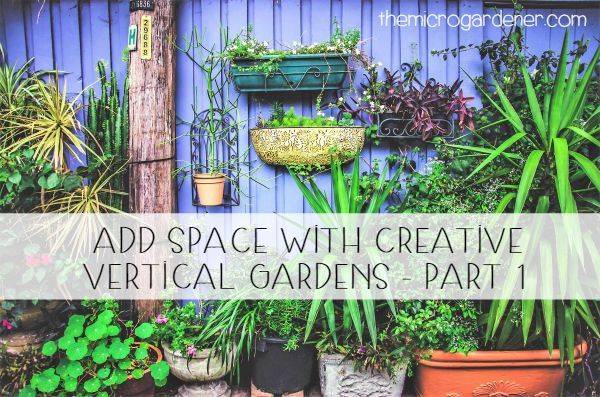
This image is property of themicrogardener.com.
Best Plants for Vertical Gardening
Vertical gardening offers endless possibilities when it comes to plant selection. Here are some of the best plants suited for vertical gardening:
Vines and climbers
Vines and climbers are perfect for vertical gardens as they naturally grow upwards, making use of support structures as they climb. Some popular choices for vertical gardening include morning glories, clematis, sweet peas, or climbing roses. These plants can add a touch of elegance and beauty to your vertical garden.
Herbs and spices
Growing herbs and spices in your vertical garden is not only practical but also adds a burst of flavors to your meals. Choose shallow-rooted herbs like basil, thyme, rosemary, or mint that are well-suited to container gardening. Not only will they provide fresh ingredients for your culinary creations, but they will also fill your vertical garden with delightful scents.
Leafy greens
Leafy greens are an excellent choice for vertical gardens, especially if you’re looking to grow your own fresh salads. Lettuce, spinach, kale, and Swiss chard can all be grown vertically, allowing you to maximize your harvest in limited space. Enjoy a constant supply of nutrient-packed greens by regularly harvesting the outer leaves.
Flowering plants
Flowering plants add a vibrant burst of colors and attract pollinators to your vertical garden. Choose flowering vines like passionflowers, morning glories, or trumpet vines for a dramatic display of blooms. Alternatively, opt for compact flowering plants like petunias, marigolds, or pansies that can thrive in vertical containers.
Succulents
Succulents are renowned for their low maintenance and ability to thrive in conditions with limited water. They are well-suited to vertical gardens, as they provide interesting textures and forms. Choose succulents like echeverias, sedums, or hens and chicks, and create unique and eye-catching arrangements.
Vertical Gardening for Food Production
Vertical gardening offers tremendous potential for food production in urban environments. With careful planning and implementation, you can grow a variety of vegetables, fruits, and herbs in your vertical garden.
Growing vegetables and fruits
Vertical gardens can provide an abundant harvest of fresh vegetables and fruits. Choose compact and dwarf varieties of vegetables suited to vertical gardening, such as cherry tomatoes, cucumbers, peppers, or beans. Train them using trellises or stakes to maximize vertical space utilization and enjoy a bountiful harvest of vine-ripened produce.
Creating a vertical herb garden
Herbs are a popular choice for vertical gardening due to their compact size and versatility. Consider creating a dedicated vertical herb garden using a combination of pockets, planters, or hanging containers. Grow a variety of herbs like basil, parsley, cilantro, or dill, and enjoy the convenience of having fresh herbs at your fingertips.
Maximizing crop yield in limited space
By implementing vertical gardening techniques, you can maximize crop yield in limited space. Planting vertically allows you to grow more plants per square foot compared to traditional gardening methods. Utilize trellises, hanging baskets, or stacked containers to make the most of your available space. With careful planning and proper maintenance, you can enjoy a productive and thriving vertical garden.

This image is property of juniperlandscape.com.
Vertical Gardening in Commercial Buildings
Vertical gardening is not limited to residential spaces; it also offers numerous benefits for commercial buildings. Let’s explore some advantages of implementing vertical gardens in commercial settings.
Benefits for employees
Vertical gardens in commercial buildings can have a positive impact on employee well-being and productivity. Research has shown that exposure to nature and green spaces can reduce stress, improve mental health, and increase overall job satisfaction. By incorporating vertical gardens into office spaces, employees can experience the calming and rejuvenating effects of nature, leading to increased productivity and creativity.
Improving indoor air quality
Indoor air quality is a significant concern in commercial buildings, as poor air quality can have negative effects on employee health and productivity. Vertical gardens act as natural air purifiers, filtering out pollutants and releasing oxygen into the environment. By incorporating vertical gardens into commercial buildings, indoor air quality can be significantly improved, creating a healthier and more pleasant working environment.
Increasing urban green spaces
Vertical gardens in commercial buildings contribute to the creation of urban green spaces. In densely populated cities with limited ground space, vertical gardens offer an opportunity to bring nature into the urban environment. They provide a glimpse of greenery amid the concrete and steel, creating a more visually appealing and environmentally friendly landscape. By increasing urban green spaces, we can promote biodiversity, support pollinators, and enhance the overall quality of urban life.
Enhancing building aesthetics
Vertical gardens can transform the appearance of commercial buildings, making them more visually appealing and attractive. With a variety of plants and flowers adorning the vertical surfaces, buildings can become living, breathing works of art. Vertical gardens allow for endless possibilities of design and creative expression, making each building unique and captivating. By enhancing building aesthetics, vertical gardens can contribute to the overall aesthetic appeal of the surrounding urban landscape.
Conclusion
In conclusion, vertical gardening offers a multitude of benefits for urban spaces, making it an innovative and popular solution for maximizing limited space, improving air quality, reducing energy consumption, and enhancing aesthetics. By choosing the right plants, designing and building a vertical garden, implementing suitable techniques, and providing proper maintenance and care, you can create a thriving and beautiful green oasis. Vertical gardening has the potential to transform not only residential spaces but also commercial buildings, promoting sustainable urban development and enhancing the quality of urban life. Embrace the future of vertical gardening and join the movement towards a greener and more sustainable world.





